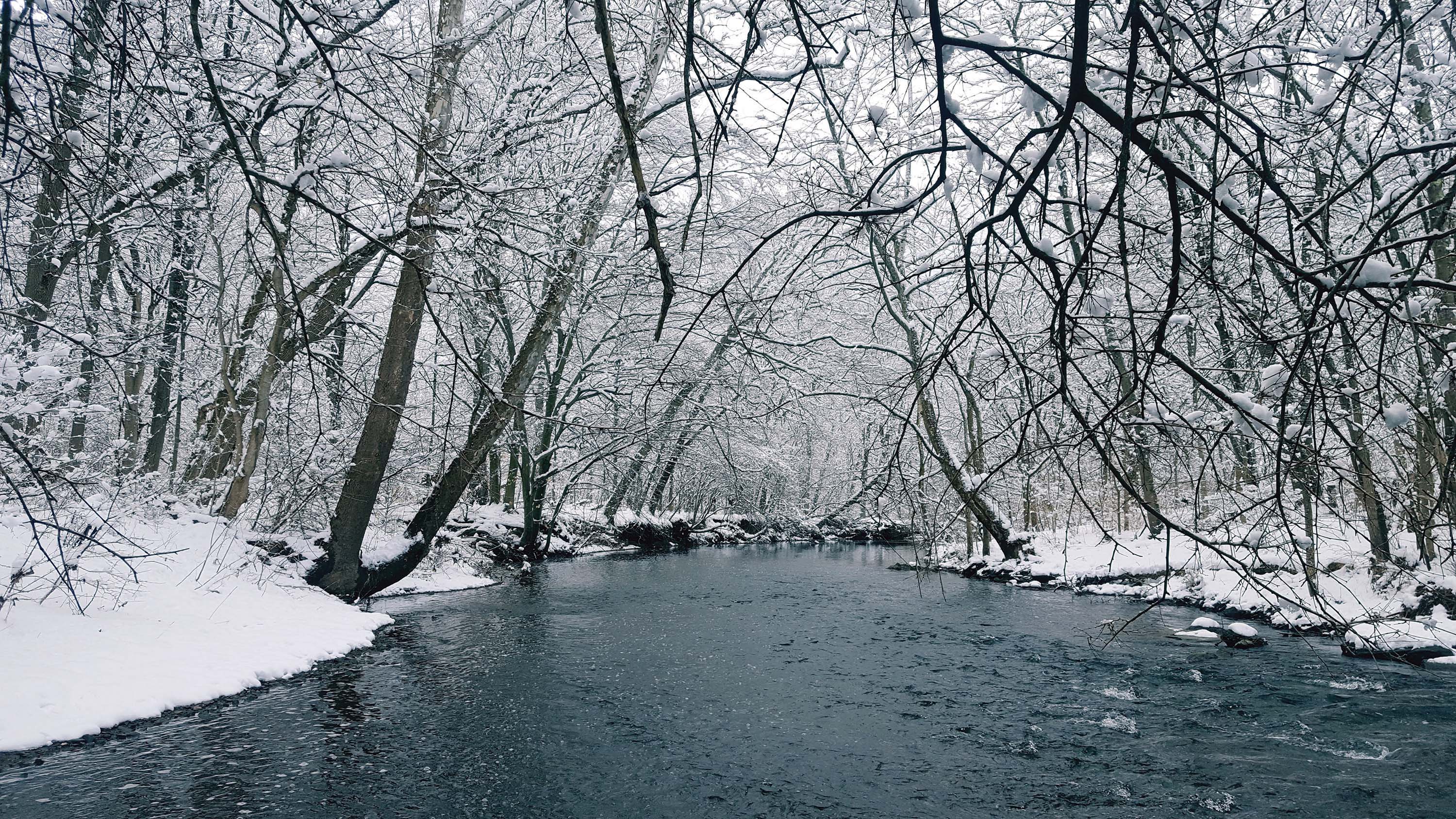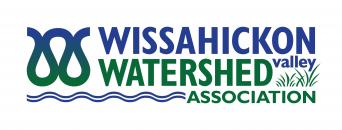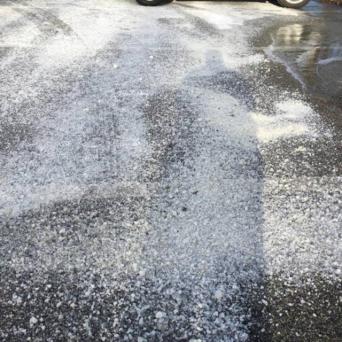
Cutting Back on Road Salts Can Keep Local Waterways Healthy

How You Can Help Prevent Salt Spikes in the Wissahickon
- Shovel early and often during a large winter storm to minimize the need for de-icers.
- Apply de-icers early and sparingly; extra salt will not melt ice faster.
- If you must use a de-icer, sweep up the extra salt left on the ground after the snow melts. You can use it again next storm and limit the amount of chloride that gets washed into the creek after snow melts.
- Consider using salts with beet juice additives. Beet juice is becoming popular as an organic de-icing agent that melts ice at very low temperatures. It is less corrosive to our cars and roads than salt.
As days get shorter and temperatures get lower (like it or not!), we are getting closer to wintertime. And with the approaching season come snowy roads and icy driveways. Millions of people across the Northeast use road salts to de-ice their homes and roads, but how do they affect our waterways, and is there anything we can do to reduce its impact?
Salts are composed of ions that are bonded together, and are present in both fresh and salt water. They are a vital part of life. However, as road salt became popular as a deicer in the 1970s, we saw levels of chlorides (or dissolved salt ions) spike dramatically in our fresh water ecosystems.
As ice and snow melt in late winter and spring, chloride concentrations spike in streams and tributaries due to the runoff of road salt into the water. Chloride concentrations tend to be higher in areas with lots of paved surfaces, like highways, parking lots and driveways, because stormwater and snowmelt runoff do not have a chance to soak into the ground and filter before entering rivers, lakes and streams.
Once chlorides are present in a water body, there are no biological processes to remove them. They are not typically removed at water treatment plants because desalination technology is costly.
The full implications of these higher chloride levels have yet to be determined, but scientists who study freshwater ecosystems have found many indications that increased salt concentrations can be harmful to plants and wildlife in the
watershed. Higher salt concentrations may interfere with biological processes that help organisms maintain the proper concentration of salt and other solutes in their cells, impacting the animals’ survival, growth and reproduction.
At WVWA, our staff and volunteers monitor chloride concentrations in the creek to keep tabs on levels of salts in our waters, and we use this information as a tool to inform our local behavior. If you are interested in helping monitor salt in the creek, or want to get involved in raising awareness in your community, contact Alex@wvwa.org.


